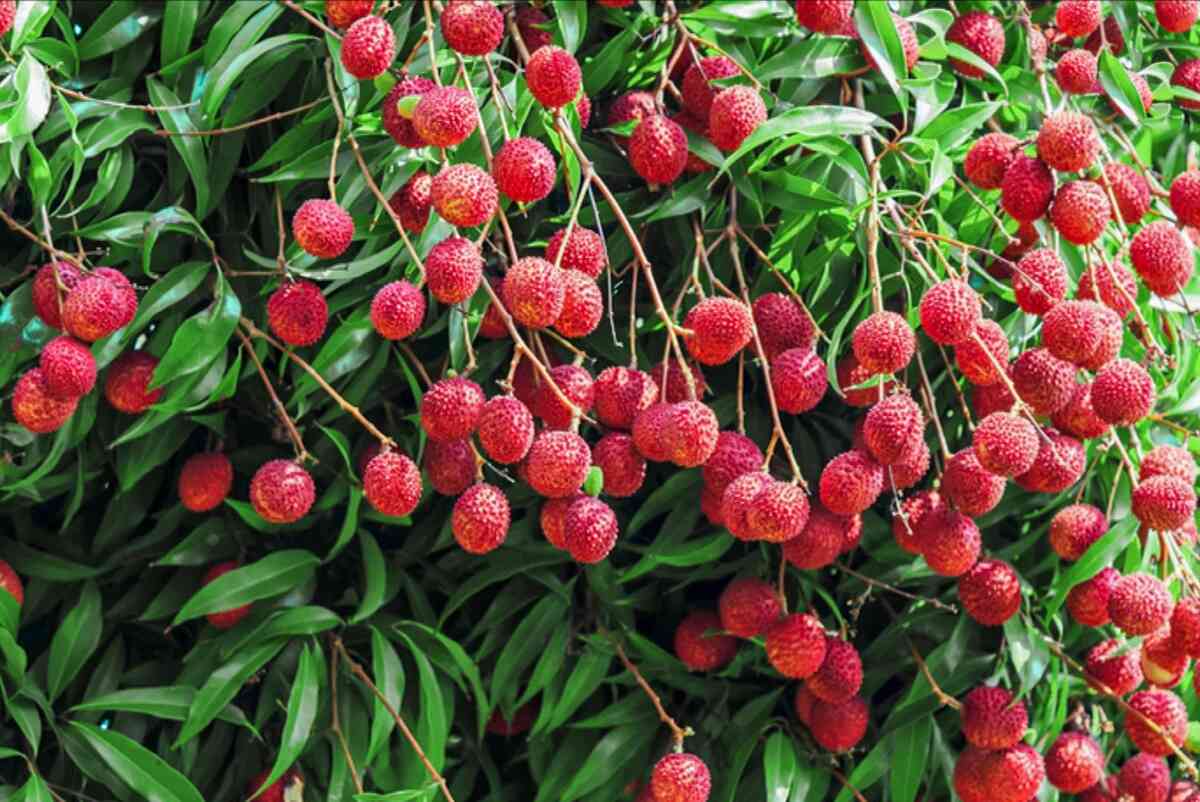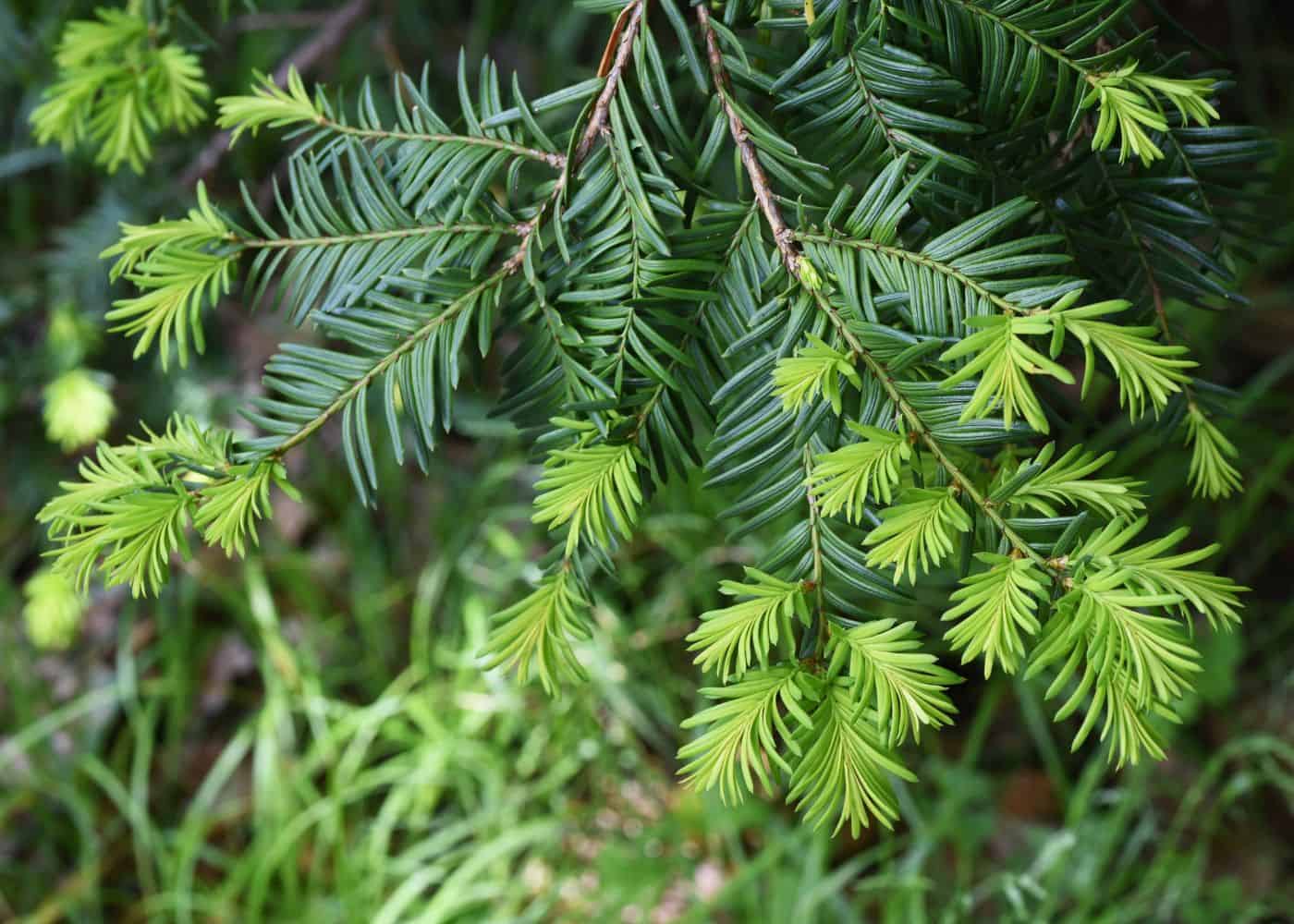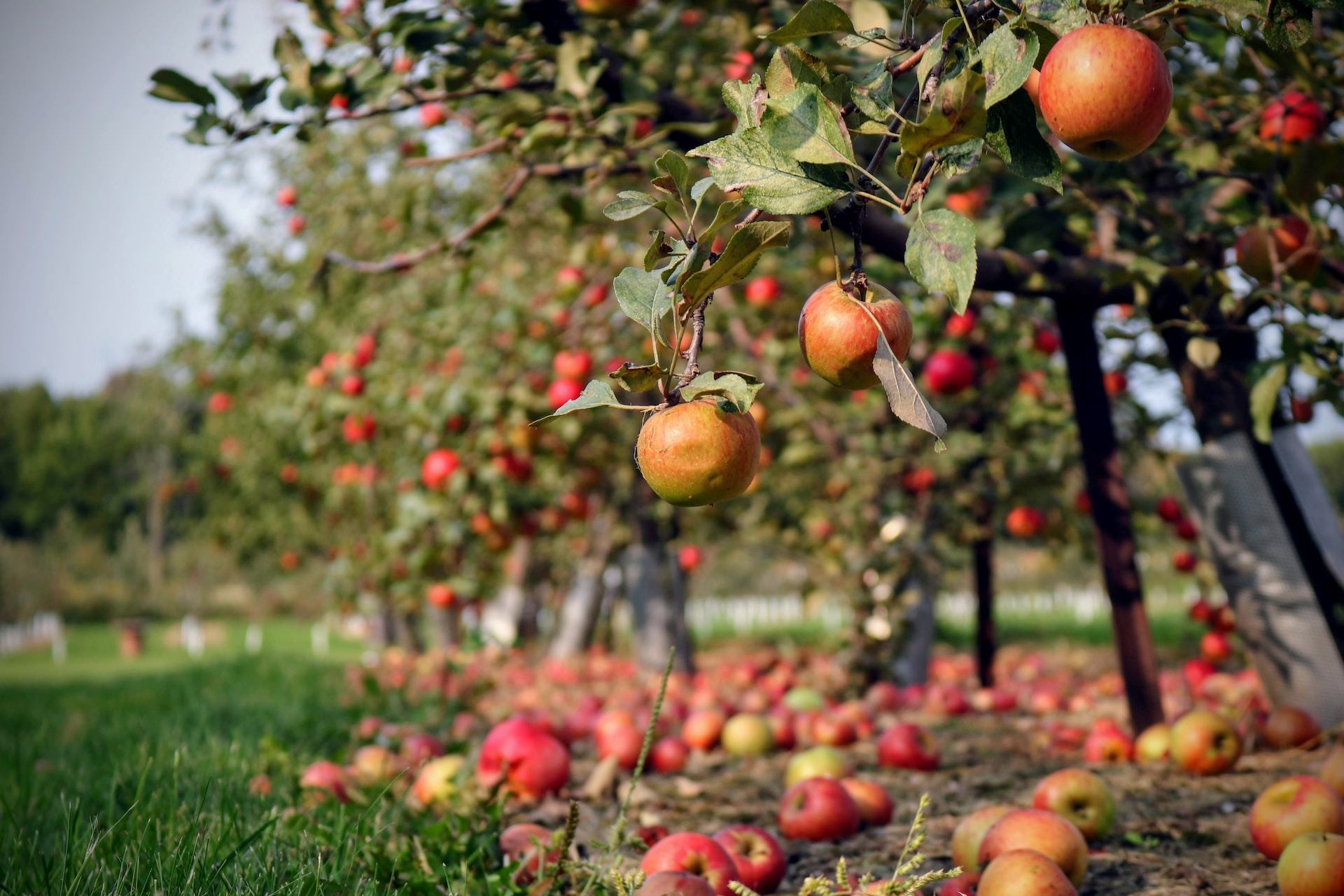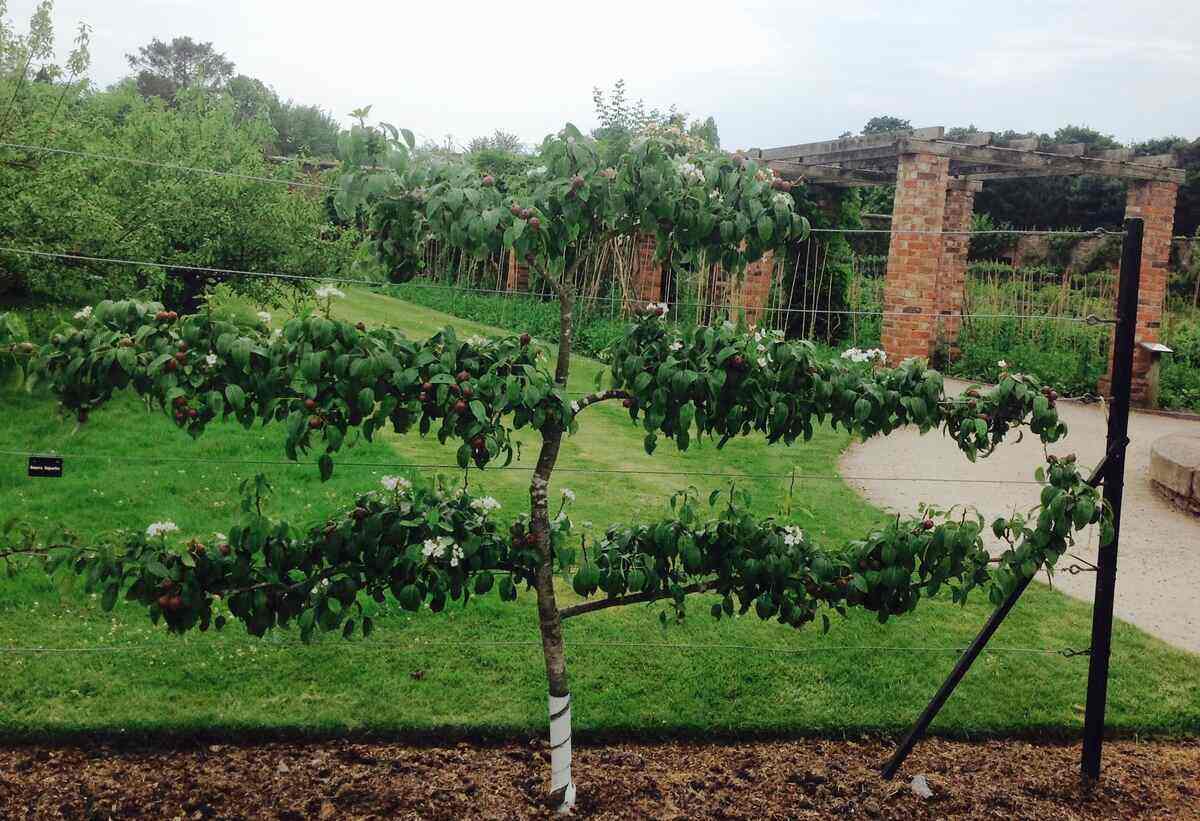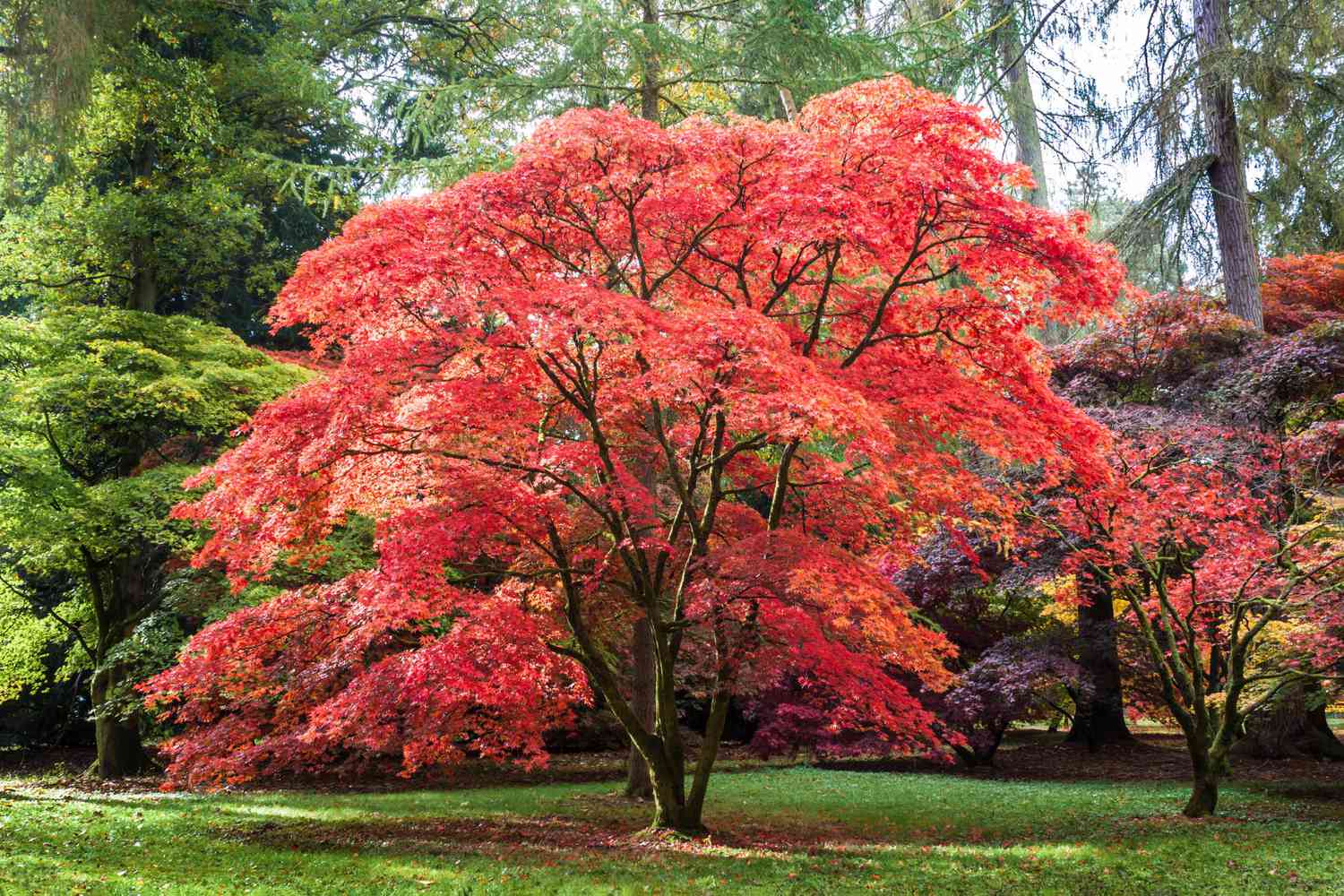Home>Gardening Techniques>Plant Care>What Fruit Trees Grow In Texas
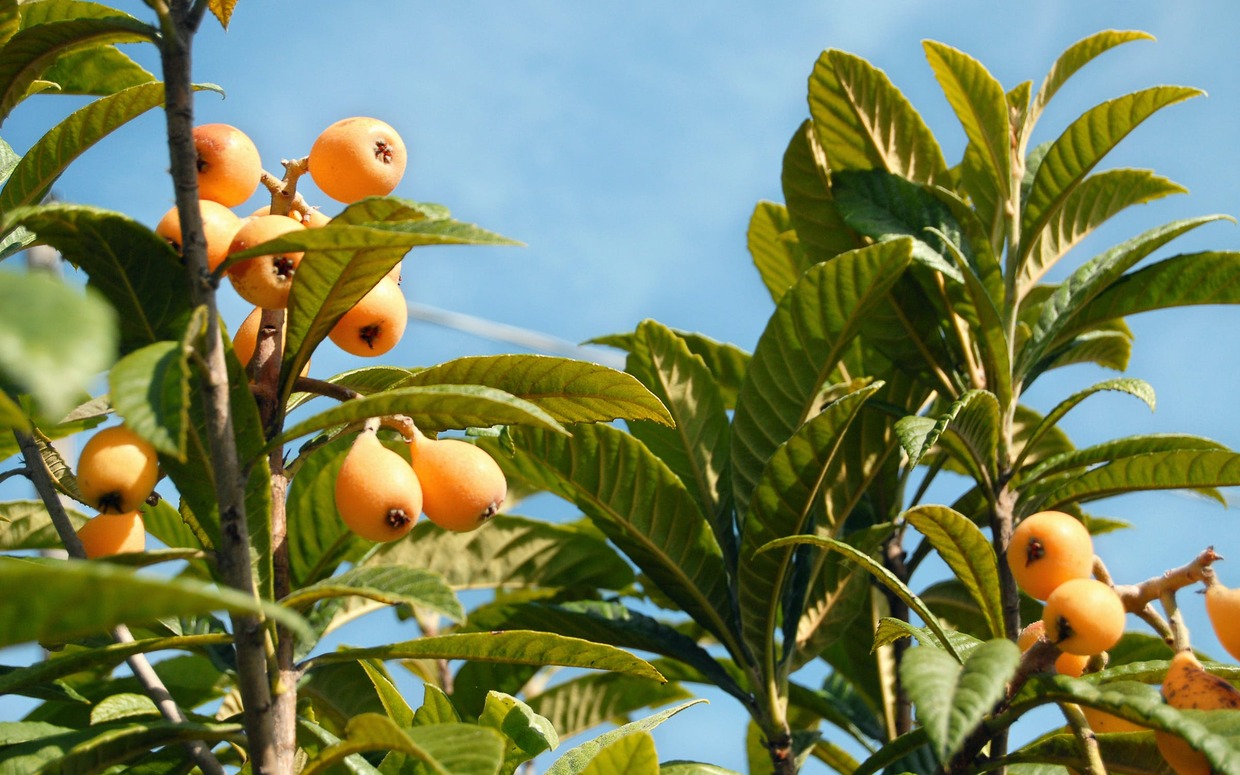

Plant Care
What Fruit Trees Grow In Texas
Modified: January 22, 2024
Discover the best fruit trees to grow in Texas and learn essential plant care tips for a successful harvest. Enhance your gardening skills and create a fruitful garden oasis in the Lone Star State.
(Many of the links in this article redirect to a specific reviewed product. Your purchase of these products through affiliate links helps to generate commission for Chicagolandgardening.com, at no extra cost. Learn more)
Table of Contents
Introduction
Welcome to the wonderful world of fruit trees in Texas! If you have a passion for gardening and want to add some delicious and fresh fruits to your diet, growing fruit trees in Texas is a fantastic choice. Not only will you be able to enjoy a bountiful harvest, but you’ll also have the satisfaction of nurturing and caring for these beautiful trees.
Texas is known for its diverse climate, ranging from the hot and humid summers in the Gulf Coast region to the cooler winters in the northern parts of the state. This diversity allows for a wide variety of fruit trees to thrive in different parts of Texas. Whether you live in the northern regions of the state, where the climate is more similar to that of the Midwest, or in the southern regions, where the climate is subtropical, there is a fruit tree that will suit your needs.
Before diving into the specific types of fruit trees that grow well in Texas, it’s important to understand the growing zones across the state. The United States Department of Agriculture (USDA) has divided the country into different zones based on average minimum winter temperatures. Texas is divided into nine different zones, ranging from Zone 6 in the Panhandle area to Zone 10 in the southernmost parts of the state. Knowing your specific zone will help you choose the right fruit trees that can withstand the local climate and thrive in your garden.
Now, let’s explore the different types of fruit trees that are well-suited for Texas and discover the joy of growing your own fresh and delicious fruits right in your backyard.
Climate and Growing Zones in Texas
Texas is known for its diverse climate, with varying temperatures and weather patterns across the state. Understanding the climate and growing zones in Texas is essential for successful fruit tree cultivation. The United States Department of Agriculture (USDA) has divided Texas into nine different zones based on average minimum winter temperatures.
In the northern parts of the state, such as the Panhandle, the climate is more similar to that of the Midwest, with chilly winters and hot summers. The USDA zones in these regions range from Zone 6, with average winter lows of -10 to 0 degrees Fahrenheit, to Zone 8, with lows of 10 to 20 degrees. Fruit trees that thrive in these cooler climates include apples, peaches, pears, and plums.
As you move south towards Central Texas and the Hill Country, the climate becomes more temperate. USDA Zones 8 and 9 cover this area, with average winter lows ranging from 20 to 30 degrees Fahrenheit. This region is suitable for a wide variety of fruit trees, including citrus trees, figs, pomegranates, persimmons, and avocados.
The Gulf Coast region and South Texas have a subtropical climate, characterized by mild winters and hot, humid summers. USDA Zones 9 and 10 cover these areas, with average winter lows ranging from 20 to 40 degrees Fahrenheit. Fruit trees that thrive in these warm climates include citrus trees, figs, pomegranates, persimmons, and avocados, as well as some tropical varieties like bananas and mangoes.
It’s important to consider not only the average minimum temperatures but also the length of the growing season in your specific area. Coastal areas tend to have longer growing seasons compared to regions further inland, allowing for a wider range of fruit tree options.
Before choosing specific fruit tree varieties, make sure to check the USDA hardiness zone map and consult with local gardening experts or nurseries to ensure the selected trees are well-suited for your specific zone. Understanding the climate and growing zones in Texas will help you make informed choices when planning your fruit tree garden and maximize your chances of success.
Apple Trees in Texas
While it may come as a surprise to some, apple trees can indeed thrive in certain parts of Texas. However, due to the state’s diverse climate, it’s important to choose apple tree varieties that are specifically suited for the warmer conditions found in certain regions.
In Texas, apple trees are best suited for cultivation in the northern parts of the state, where the climate is cooler and more similar to that of the Midwest. Varieties such as ‘Gala,’ ‘Fuji,’ and ‘Granny Smith’ have shown good adaptability to the Texas climate. These varieties require a certain amount of winter chilling hours, which can be found in USDA Zones 6 to 8.
When planting apple trees, it’s crucial to select suitable rootstocks that are resilient to the local soil conditions and diseases. Local nurseries can provide guidance on choosing the right rootstock for your area. Apples thrive in well-drained soil with a neutral pH level, so it’s essential to prepare the soil properly before planting. Additionally, apple trees require full sun and proper spacing to allow for good air circulation.
It’s worth mentioning that success with apple trees in Texas can still vary depending on the specific location and the amount of winter chill hours experienced in a given year. In areas with milder winters, there can sometimes be a lack of sufficient chilling hours, which may affect the fruiting of certain apple varieties. Therefore, it’s crucial to research and select apple tree varieties that are known to have lower chilling requirements to improve your chances of a successful harvest.
With proper care, including regular watering, fertilization, and pest management, it is possible to enjoy the crisp and juicy taste of homegrown apples in certain parts of Texas. Keep in mind that apple trees generally require cross-pollination, so be sure to plant compatible varieties or use a self-fertile variety like ‘Gala’ if space is limited.
Whether you’re a fan of snacking on fresh apples or love baking apple pies, growing apple trees in Texas can be a rewarding endeavor with the right selection of varieties and proper care.
Peach Trees in Texas
When it comes to growing fruit trees in Texas, peach trees are a popular choice due to their adaptability and delicious fruits. With the right selection of varieties and suitable growing conditions, you can enjoy a bountiful harvest of juicy peaches right from your own backyard.
Peach trees are well-suited for the warm climate found in many parts of Texas. They thrive in areas with full sun exposure and well-drained soil. Texas is known for its diverse peach varieties, with some of the most popular being ‘Texstar,’ ‘Redskin,’ ‘Julyprince,’ and ‘Elberta.’ These varieties offer a range of flavors and textures, from sweet and juicy to slightly tangy.
When it comes to choosing peach tree varieties, it’s important to consider the chilling hours required. Chilling hours refer to the number of hours that the tree needs to be exposed to temperatures below 45 degrees Fahrenheit during the dormant season to break the bud dormancy and ensure a fruitful harvest. In Texas, different regions have varying chilling hour requirements, ranging from 350 to 800 hours.
For the northern parts of Texas, where chilling hours are higher, varieties like ‘Redskin’ and ‘Texstar’ are well-suited. These varieties can tolerate colder temperatures and have higher chilling requirements. In central and southern parts of Texas, where chilling hours are lower, varieties such as ‘Julyprince’ and ‘Elberta’ fare better.
To successfully grow peach trees, proper pruning and regular maintenance are essential. Annual pruning helps maintain the tree’s shape, promotes good airflow, and encourages fruit production. Peach trees also benefit from regular irrigation, especially during dry periods, to ensure optimal growth and fruit development.
Peach trees are susceptible to various pests and diseases, such as peach leaf curl, brown rot, and aphids. To prevent these issues, it’s important to implement a regular pest management program. This may include the use of organic insecticides, as well as practicing good sanitation by removing fallen fruits and pruning infected branches.
From enjoying juicy peaches fresh off the tree to using them in desserts, jams, and preserves, growing peach trees in Texas offers a delightful experience. With the right selection of varieties, proper care, and attention to pest management, you can enjoy the sweet rewards of homegrown peaches throughout the summer months.
Pear Trees in Texas
Pear trees are a fantastic addition to any fruit tree garden in Texas, offering a sweet and juicy fruit that is perfect for snacking, baking, and preserving. While pears require specific growing conditions and care, they can thrive in many regions of Texas with the right varieties and proper maintenance.
When selecting pear tree varieties for Texas, it’s important to consider the chilling hours required for successful fruiting. Chilling hours are the number of hours that the tree needs to be exposed to temperatures below 45 degrees Fahrenheit during the dormant season. In Texas, pear trees typically require around 600 to 800 chilling hours.
Some of the popular pear tree varieties for Texas include ‘Bartlett,’ ‘Moonglow,’ ‘Warren,’ and ‘Kieffer.’ ‘Bartlett’ pears are known for their sweet and buttery flavor, while ‘Moonglow’ pears have a smooth texture and a slightly citrusy taste. ‘Warren’ pears are beloved for their exceptionally sweet and juicy flavor, and the ‘Kieffer’ variety is commonly used for canning and baking due to its firm and crisp texture.
Pear trees require well-drained soil and full sun exposure for optimal growth and fruit production. Proper pruning is essential to maintain the tree’s shape, encourage airflow, and promote the development of strong branches. Pear trees are self-fertile, meaning they can produce fruit without cross-pollination from other varieties, but having two different cultivars can increase the yield and improve the fruit quality.
Regular irrigation is crucial for pear trees, especially during dry periods. Providing consistent moisture helps prevent issues such as fruit drop and promotes the development of juicy and flavorful pears. Mulching around the base of the tree can also help retain moisture and control weed growth.
Pear trees are vulnerable to pests and diseases, including fire blight, pear psylla, and codling moth. Implementing a comprehensive pest management plan that includes regular inspections, proper sanitation, and the application of organic or chemical pest control methods can help protect your pear trees and ensure a healthy harvest.
With their luscious fruits and beautiful blossoms, pear trees add both aesthetic appeal and delicious harvests to Texas gardens. With proper care, including appropriate variety selection, maintenance, and pest management, you can enjoy the delightful taste of homegrown pears straight from your backyard.
Plum Trees in Texas
Plum trees are a wonderful addition to any fruit tree garden in Texas, offering a variety of sweet, juicy, and flavorful fruits. With their beautiful blossoms and delicious harvests, plum trees can thrive in many regions of Texas with the right varieties and proper care.
When selecting plum tree varieties for Texas, it’s important to consider the chilling hours required for successful fruiting. Chilling hours refer to the number of hours that the tree needs to be exposed to temperatures below 45 degrees Fahrenheit during the dormant season. In Texas, plum trees typically require around 400 to 800 chilling hours.
Some popular plum tree varieties that perform well in Texas include ‘Santa Rosa,’ ‘Methley,’ ‘Bruce,’ and ‘Ozark Premier.’ The ‘Santa Rosa’ plum is known for its sweet and tangy flavor and is an excellent choice for eating fresh or using in desserts. ‘Methley’ plums are famous for their early ripening and deep red flesh, while ‘Bruce’ plums offer a tart flavor and firm texture. ‘Ozark Premier’ plums are widely cultivated for their richly flavored, juicy fruits.
Plum trees require well-drained soil and full sun exposure for optimal growth and fruit production. Proper pruning is vital to maintain the tree’s shape, promote good airflow, and stimulate the growth of strong branches. It’s also important to thin out the fruits when they are young to avoid overcrowding and promote larger and healthier plum fruits.
Regular irrigation is crucial, especially during dry spells, to prevent water stress and ensure proper fruit development. Mulching around the base of the tree can help retain moisture, control weed growth, and protect the shallow root system of the plum tree.
As with any fruit tree, plum trees are susceptible to pests and diseases, including plum curculio, black knot, and brown rot. Implementing a comprehensive pest management plan that includes regular monitoring, appropriate pruning to remove infected branches, and the use of organic or chemical controls can help keep your plum trees healthy and productive.
Growing plum trees in Texas not only provides a stunning landscape addition but also rewards you with an abundance of delicious fruits. With proper care, including the right variety selection, maintenance, and pest management, you can enjoy the sweet and tangy taste of homegrown plums straight from your own backyard.
Fig Trees in Texas
Fig trees are a popular choice for fruit tree enthusiasts in Texas due to their adaptability to the state’s diverse climate and their delicious, sweet fruits. These trees thrive in the warm and arid conditions found in many regions of Texas, making them an excellent addition to any fruit tree garden.
When it comes to fig trees, there are several varieties that do well in Texas, such as ‘Brown Turkey,’ ‘Celeste,’ ‘Texas Everbearing,’ and ‘LSU Purple.’ ‘Brown Turkey’ and ‘Celeste’ figs are known for their sweet and rich flavor, while ‘Texas Everbearing’ produces fruit with a milder taste. ‘LSU Purple’ figs have a deep red color and a sweet flavor profile.
Fig trees prefer well-drained soil and thrive in full sun exposure. They can tolerate various soil types, including sandy or clay soils, but good drainage is essential to prevent root rot. Fig trees are generally considered hardy and drought-tolerant, making them suitable for Texas’ hot and dry climate.
Proper pruning helps maintain the shape of the tree and promotes better fruit production. Prune fig trees during the dormant season to remove dead or overcrowded branches. Figs can be grown as either small trees or as shrubs, depending on your preference and available space.
One unique characteristic of fig trees is that their fruits develop on the previous year’s growth, meaning they produce figs on both old and new wood. This makes them forgiving when harsh winter weather damages the branches, as new shoots can still produce a harvest.
While fig trees are generally pest and disease resistant, they can be susceptible to fig rust, root-knot nematodes, and fig mosaic virus. Regular inspection of the leaves and taking prompt action at the first sign of disease or infestation is crucial to maintain the health of your fig trees. Applying organic or chemical treatments may be necessary to manage these issues.
Fig trees offer not only delicious fruits but also attractive foliage and a unique tropical appearance. Whether you enjoy figs fresh off the tree or use them in dishes and desserts, growing fig trees in Texas provides a rewarding experience for any fruit tree enthusiast.
Citrus Trees in Texas
Citrus trees are a popular choice for fruit tree enthusiasts in Texas, thanks to the state’s warm climate that is well-suited for their growth. With proper care and the right variety selection, you can have a successful citrus orchard, enjoying the bounty of delicious and fresh fruits.
Texas is known for its varied climates, ranging from the cooler regions in the north to the subtropical conditions in the south. This diversity allows for the cultivation of a wide range of citrus fruits. Some of the popular citrus tree varieties grown in Texas include oranges, grapefruits, lemons, limes, and tangerines.
When choosing citrus trees for your Texas garden, it’s important to consider the specific variety and its cold hardiness. Different citrus varieties have different tolerance levels to cold temperatures. For example, ‘Satsuma’ mandarins and ‘Meyer’ lemons are known to be more cold-tolerant and are suitable for regions with occasional freezing temperatures.
Citrus trees thrive in well-drained soil and require full sun exposure to optimize growth and fruit production. They also require regular watering, especially during the hotter months, to prevent water stress and ensure juicy and flavorful fruits.
Proper pruning is essential to maintain the overall shape of the citrus tree and facilitate airflow, reducing the risk of disease. Pruning should be done during the early spring, before new growth starts. Mulching around the base of the tree helps retain moisture, control weed growth, and protect the root system of the citrus tree.
Citrus trees are susceptible to various pests and diseases, including citrus greening, citrus canker, and aphids. Regular inspection of the trees and implementing a pest management plan are crucial to keep your citrus trees healthy and productive. This may involve using organic insecticides or seeking guidance from local gardening experts or nurseries.
Citrus trees not only provide delicious fruits but also add beauty and fragrance to your Texas garden. Whether you enjoy freshly squeezed orange juice, tangy lemonade, or aromatic lime zest in your culinary creations, growing citrus trees in Texas can bring joy and satisfaction to any fruit tree enthusiast.
Pomegranate Trees in Texas
Pomegranate trees are a wonderful addition to any fruit tree garden in Texas, offering not only delicious fruits but also ornamental beauty. With their unique shape and vibrant colors, pomegranate trees can thrive in the diverse climates found throughout the state.
When it comes to growing pomegranate trees in Texas, it’s important to select varieties that are well-suited for the warmer climate and can tolerate the occasional winter freeze. Some popular pomegranate varieties that perform well in Texas include ‘Wonderful,’ ‘Angel Red,’ ‘Ambrosia,’ and ‘Grenada.’
Pomegranate trees prefer well-drained soil, and full sun exposure is essential for optimal growth and fruit production. They are known for their tolerance to drought conditions, making them ideal for the hot and arid regions of Texas. Proper irrigation is important in the early stages of growth to establish a strong root system, but once established, pomegranate trees can survive with minimal watering.
Pruning pomegranate trees is essential to maintain their shape, encourage airflow, and stimulate the growth of new shoots. Prune during the late winter or early spring before new growth begins. Pomegranate trees can be grown as small trees or trained as shrubs, depending on personal preference and available space.
Pomegranate trees are generally pest and disease resistant, but they can still be susceptible to certain issues such as root rot and fungal diseases. Avoid overwatering and provide good drainage to prevent these problems. Regular inspection of the trees will help identify any pest or disease issues early, and appropriate measures can be taken, such as applying organic or chemical treatments if necessary.
In addition to their tasty and healthy fruits, pomegranate trees also offer beautiful orange-red flowers and a striking appearance in the garden. Pomegranates are not only delicious to enjoy on their own but can also be used in a variety of dishes and drinks, adding a sweet and tangy flavor.
Whether you’re growing pomegranate trees for their fruits or their ornamental value, they are a delightful addition to any Texas garden. Enjoy the unique and exotic flavors of homegrown pomegranates while reveling in the beauty and versatility of these wonderful trees.
Persimmon Trees in Texas
Persimmon trees are a fantastic choice for fruit tree enthusiasts in Texas, offering a unique and flavorful fruit that is both delicious and versatile. With their adaptability to different climates and the right variety selection, growing persimmon trees in Texas can be a rewarding experience.
When it comes to persimmon trees, there are two main types: astringent and non-astringent. Astringent persimmons, such as the popular ‘Hachiya’ variety, are rich and sweet but require fully ripened fruit to be consumed. Non-astringent persimmons, like the ‘Fuyu’ variety, can be eaten while firm and are a favorite for their crisp, sweet flavor.
Persimmon trees thrive in well-drained soil and prefer full sun exposure. They are known for their tolerance to various soil types, including sandy and clay soils, which makes them suitable for different regions across Texas. Proper watering is crucial, especially during the tree’s establishment phase. Once established, persimmon trees are generally drought-tolerant.
Pruning persimmon trees is essential to maintain their shape and encourage good airflow. Pruning should be done during the late winter or early spring, before new growth begins. Persimmons can be grown as small trees or trained as shrubs, depending on personal preference and available space.
Persimmon trees are generally considered low-maintenance and have good resistance to pests and diseases. However, occasional issues such as root rot and fungal diseases can occur, especially in areas with poor drainage. Regular inspection and appropriate measures, such as providing proper drainage and applying organic or chemical treatments if necessary, can help keep persimmon trees healthy.
Not only are persimmons delicious straight from the tree, but they can also be used in a variety of culinary applications, including desserts, jams, and even savory dishes. Their unique flavor and versatility make them a favorite among Texas gardeners.
Persimmon trees also provide ornamental value, with vibrant fall foliage and attractive fruit that adds visual interest to the landscape. Whether you enjoy the sweet and succulent fruits or appreciate the beauty of the tree itself, growing persimmon trees in Texas can be a wonderful addition to any fruit tree garden.
Avocado Trees in Texas
While avocados are commonly associated with warmer climates, it is indeed possible to grow avocado trees in certain parts of Texas. With the right variety selection and proper care, you can enjoy the creamy, nutritious fruits of your own avocado tree right in your Texas garden.
Avocado trees thrive in regions of Texas with mild, frost-free winters and a long, warm growing season. They are well-suited for the southern parts of the state, such as the Rio Grande Valley and the Gulf Coast. Some varieties that have shown success in Texas include ‘Mexicola,’ ‘Brazos Belle,’ ‘Lila,’ and ‘Wilma.’
Avocado trees require well-drained soil with a pH level between 6 and 7.5. They prefer full sun exposure and need protection from strong winds, which can damage their delicate branches. Planting the trees in a sheltered spot or using windbreaks can help mitigate this risk.
Proper irrigation is crucial for avocado trees, as they have higher water requirements compared to many other fruit trees. They prefer regular watering but dislike being overly saturated. Ensure that the soil is consistently moist but not waterlogged to prevent root rot.
Avocado trees benefit from regular pruning to maintain a desirable shape, promote good airflow, and encourage better fruit production. It’s important to prune during the late winter or early spring before the tree starts its new growth. Pruning can help remove dead or damaged branches and maintain a manageable tree size.
Although avocado trees are generally hardy and disease-resistant, they can be affected by root rot, fungal diseases, and pests such as mites and whiteflies. Regular inspection and implementing proper pest and disease control measures, including organic or chemical treatments, can help keep your avocado trees healthy and productive.
Avocado trees typically take a few years to bear fruit, so patience is key when growing them. Once they start producing, however, you’ll be rewarded with a bountiful harvest of delicious avocados, perfect for guacamole, salads, and more.
While growing avocado trees in Texas may require specific considerations and careful selection of suitable varieties, the experience of enjoying your own homegrown avocados makes it all worthwhile. Embrace the challenge and delight in the satisfaction of nurturing avocado trees in your Texas garden.
Conclusion
Growing fruit trees in Texas can be a fulfilling and rewarding endeavor. With the diverse climate and growing zones across the state, there is a wide variety of fruit trees that can thrive in different regions. From apples and peaches to pears and plums, figs, citrus, pomegranates, persimmons, and even avocados, there are options to suit every taste and preference.
Understanding the specific requirements of each fruit tree, such as chilling hours, soil conditions, and pruning needs, is crucial for success. It’s important to select suitable varieties for your specific region and growing zone. Consulting with local nurseries or gardening experts can provide valuable insights and guidance specific to your area.
Proper care, including regular watering, fertilization, pest management, and pruning, is essential for the health and productivity of fruit trees. It’s important to monitor the trees for any signs of pests or diseases and take prompt action to address them. Implementing organic or chemical pest control methods, where necessary, can help protect your trees and ensure a fruitful harvest.
Aside from the practical benefits of homegrown fruits, cultivating fruit trees brings aesthetic beauty to your garden. The sight of blossoming trees, the fragrance of the fruits, and the satisfaction of harvesting your own delicious produce are priceless experiences.
Whether you live in the northern parts of Texas, where cooler climates prevail, or the southern regions with their subtropical conditions, there are fruit tree options that can thrive in your area. Embrace the joys and challenges of growing fruit trees in Texas, and indulge in the taste of fresh, hand-picked fruits from your own backyard.

